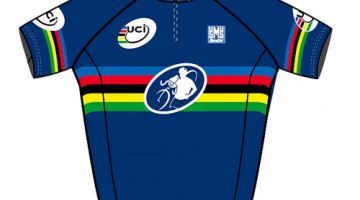CH:: You are a multiple Swiss champion. What was your personal career highlight?
CH: The six titles, for sure. But in retrospect, my consistency over the course of so many years satisfies me far more. Of course, top ten at Worlds and World Cups are great, but they lose their shine when you get those results regularly.
CH:: No single moment that you would now call your best day, when everything came together—for your career as well?
CH: My third place at the Tour de Suisse stage to Arosa.
CM: On the road…
CH: Yes. As a young rider I always raced cyclocross and road until the end of my U23 season. Then I was a pro for five years on the road, and then back to cyclocross.
CM: Lowest point of your career?
CH: Boy. The two injuries in my last season were really bad. Maybe the two missed Swiss championships titles due to bad luck.
CM: Favorite venue?
CH: I have a lot. The opposite would be easier to answer. I always liked to ride at Kalmthout, St.Wendel, Tabor, Wetzikon und Warwick in the US. I also like Hoogerheide.
CM: What is essential for a good course?
CH: It’s not just the course; at lots of places the whole atmosphere has a lot of influence. A favorite course is probably one where a rider can get a good result even if he doesn’t have a super day.
CM: And now the opposite—worst course?
CH: Asper Gavere.
CM: Why?
CH: In my era, the organization was just a debacle. No fair treatment for foreign riders, and I find the course itself to be far from fair and also far too dangerous.
CM: You raced quite a bit in the USA in the final years of your career. How does the American scene compare to Europe?
CH: ’Cross in America is about as informal and family-like as it was 25 years ago here when I started riding ’cross. I hope it stays that way as long as possible and US ’cross doesn’t orientate itself too much towards Belgium.
CM: Do you expect ’cross in America to get more commercial? Seems like cyclocross bikes are becoming the new fixies.
CH: I don’t mean commercialization so much. It’s more the atmosphere. The friendships, et cetera. Cyclocross is financed completely differently in the US than it is in Europe. But that’s not so surprising when you see how many athletes take part in every race. The market for cyclocross and ’cross accessories is far larger than it is here. In Europe, most teams and events are financed by companies that are not related to cycling.

























